When it comes to shooting your bow to the very best of your ability, it’s critical to find your correct draw length. So many people walk into an archery shop, spread their “wings” out over a ruler on the wall and have it declared, for example, “YOUR DRAW LENGTH IS 28.5”. A bow in that draw range is selected off the wall, adjusted to the declared draw length and, more times than not, it appears to fit the person perfectly. I know this because I’ve done it over and over myself while working in an archery shop during the silly season of July and August.
One problem with this method is one bow set at 28.5″ might dead nuts on while another bow might be 28.75″ on the exact same setting. Another problem is there is a good chance you don’t fall perfectly into the half inch increments we tend to place ourselves in. Our draw lengths might even vary slightly depending on the axle to axle (ATA) length of the bow we choose to shoot. An archer with a longer draw trying to shoot a shorter ATA bow might feel more comfortable with their bow set to a slightly longer draw length. Shorter ATA bows have more extreme string angles. An archer may have to bring the string deeper into their face (longer draw length) in order to get the string closer to touching the end of their nose at full draw.
In my defense and the defense of almost every archery shop out there, the method described above is usually very close. So close that the average archer wouldn’t know the difference. We, however, don’t want to be average archers; we want to be our best.
If you shoot too short a draw length any minor mistake you make will be amplified. You will probably always feel like your “scrunched” up, feel tense and it may even begin to hurt if you shoot quite a bit. If you shoot too long a draw length you will struggle holding the bow steady and it could hurt as well by the string slapping your arm. The difficulty in finding your perfect draw length is, we tend to make any bow we pick up “fit” us. We unconsciously adjust our bodies to make it feel like the bow is a perfect fit even when it’s far from it.
GETTING CLOSE
We have to start somewhere, so here are the two most common ways to get us in the ballpark of our correct draw lengths.
Wing Span Method
This is the method I described earlier. An archer stands with his or her back to the wall and spreads their arms out. A measurement is then taken from longest fingertip to longest fingertip. Once you have this measurement, you can use one of two formulas to get your “close” draw length.
1. Wingspan/2.5. (Ex. 72″ wingspan divided by 2.5 = 28.8″) 2. (Wingspan-15)/2 (Ex. 72″ wingspan minus 15 = 57. 57/2 = 28.5″)
As you can see, both equations places you in the 28.5.- 30″ draw range. If you can buy an adjustable length bow where those lengths fall into the cam adjustment these will be sufficient. However, we all know cams have cut off points. What if your number falls in the top range of one cam and the bottom range of the next cam up for the specific bow your wanting to buy? As I’ve said before, I think you will be happier buying a SLIGHTLY (we are talking only needing to make a 1/4″ adjustment here) shorter cam and twisting up the cables to lengthen your draw length to where it needs to be.
The problem with this method is it doesn’t take into account our different body, hand and facial types. We are all lumped into a number based on wingspan. Again, for most archers it’s “close enough”.
Fist Method
The Fist method is simple an archer standing with his or her bow arm up like they are shooting a bow. The bow hand is made into a fist and the archer then places their fist against the wall. It’s very important for the person measuring to make sure the archer getting measured is straight up and down when doing this. Their head needs to be square on their shoulders, they are not leaning into the wall, they aren’t rolling their bow shoulder in and they are not bending their bow arm because they are too close to the wall. It’s funny how difficult it can be to situate some archers when trying to measure them. Even doing something as simply as this, we tend to make ourselves “fit”. Probably the best way to initially set them up is to have them get into this position a few inches away from the wall and then slowly inch toward it until their fist touches it.
Once you have the archer in place, simply measure from the wall to the corner of their mouth. This is the method,I believe, is the best for “getting close”.
FINE TUNING
Now that you are in a draw length range you can work with, it’s time to fine tune it to your perfect length. Again, this can vary slightly depending on the axle to axle length of your bow.
To begin, we need to start checking how close we really are. To do this I subscribe to the method professional archer and coach Michael Braden from the great state of Texas uses. The DRAW CHECK DRILL. Please, always think safety when using this drill. Never draw a bow without a properly spined, proper length arrow in it and ALWAYS make sure it’s pointed in a safe direction at a target bale.
 To perform a Draw Check Drill the archer draws their bow, but holds the string away from their face initially. Do not anchor! What Michael does here is have his students then turn their heads out toward their release hand instead of looking down range. He then has them move their heads
To perform a Draw Check Drill the archer draws their bow, but holds the string away from their face initially. Do not anchor! What Michael does here is have his students then turn their heads out toward their release hand instead of looking down range. He then has them move their heads 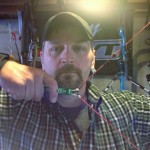 side to side kind of like they are trying to stretch out a kink in their necks by trying to touch an ear to each shoulder. What this does is essentially helps center and place the archers head where it naturally should be. Again, we tend to try to make our bodies fit our bows instead of adjusting
side to side kind of like they are trying to stretch out a kink in their necks by trying to touch an ear to each shoulder. What this does is essentially helps center and place the archers head where it naturally should be. Again, we tend to try to make our bodies fit our bows instead of adjusting  our bows to fit us. The archer will then look down range again and bring the bow string to their face. It’s important that the person helping makes sure the archer is using proper form, their body is straight, bow arm straight (some people, especially women, can’t shoot with straight bow arms
our bows to fit us. The archer will then look down range again and bring the bow string to their face. It’s important that the person helping makes sure the archer is using proper form, their body is straight, bow arm straight (some people, especially women, can’t shoot with straight bow arms 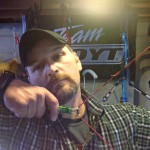 because of hyperextended elbows), and THEIR HEAD DOESNT MOVE TO MEET THE STRING.
because of hyperextended elbows), and THEIR HEAD DOESNT MOVE TO MEET THE STRING.
When you are first using this method on someone, they may need to let down and let their muscles recover several times until you can get them to remain still in perfect form and bring the string to their face without moving. They need to be in the general area of their anchor, but don’t worry about anchoring right now because they will most likely move their head when anchoring. You are simply looking at how the string falls across their face. Especially where the string sits in relationship to the archer’s nose when their head is in a natural upright position. If it’s not touching, you need to lengthen out their draw length. If it’s past the nose, you need to shorten the draw length. Let me emphasize, ad nauseam, that the archer is not to move their head. They simply bring the bowstring into their face so the person helping them with their draw length can get a perspective. This can be done by yourself with mirrors or better yet, a video camera.
MAKING ADJUSTMENTS
When you are within 1/4″ or so of your perfect draw length and adjusting the module will make it too long or too short, you can twist or untwist the string or the cables to fine tune it.
If you adjust the string, you will untwist it to lengthen out your draw length and twist it to shorten. If you use the cables, which are probably preferred, it’s the opposite. You twist the cables up to lengthen the draw and untwist to shorten. Make sure you twist each cable equally.
D Loop
While technically not part of the actual draw length measurement, your D loop is definitely an important element in the equation. We tend to treat D loops like they are one size fits all. Like your draw length, the length of your D loop will be unique to you.
The D loop needs to be adjusted perfectly for you to feel comfortable in your anchor. If it’s too short you will, again, feel scrunched up even though your draw length is correct. If it’s too long you won’t be able to find that solid anchor.
You will go thru some D loop material initially, but play with the length until you find the one that fits and feels perfect to you. Once you have it, take it off and cut several in that size. My before mentioned friend Michael Braden developed a very handy D Loop tool that measures the length when it’s on the bow and then helps you determine how long to cut a new one before burning the ends. Do a search of his name at Lancaster Archery Supply if you are interested in this.
Things to Consider
It’s very important to remember that whatever changes you make to your bow will also affect it elsewhere. Every time you make an adjustment, you will have to re-tune.
If you increase the poundage on your bow you shorten the draw length slightly. Decreasing poundage lengthens it out. So, if you twist up the cables to lengthen out your draw length, you will drop bow weight slightly and vise versa. If you are the type of person who wants to be set on a specific draw weight, this could drive you to drink. I’d worry about my draw length being perfect so I will shoot to the very best of my ability instead of whether my bow is set at 58 lbs instead of 60 lbs.
Also, anytime you start twisting on strings and cables you move them, thus moving your nocking point, peep height, etc. If your bow is paper tuned, you will probably start to nock low or nock high tears. You will also need to pay close attention to your cam timing since you are adjusting cable length. It can be a tedious process for sure.
Finding your perfect draw length will take some time. You have to adjust, re-tune, adjust, re-tune. Once you have it, measure everything, mark where your cams are your limbs and write everything down so the process will be quick and easy if you ever have to make a change such as putting on new bowstrings.
Next month I’m going to begin a series of articles to hopefully help you take your shooting to the next level.
Shoot straight and have fun!
Jack
Discover more from The HuntFishTravel Show
Subscribe to get the latest posts sent to your email.
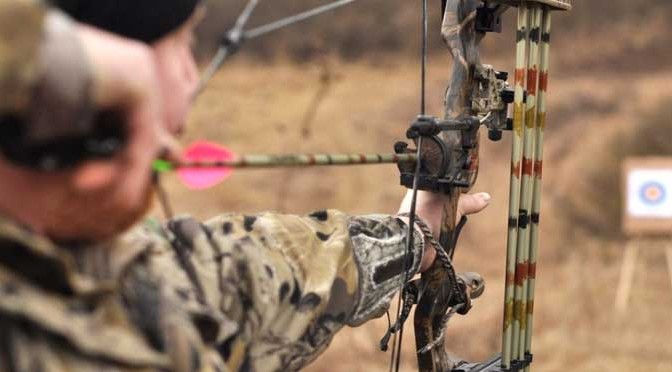
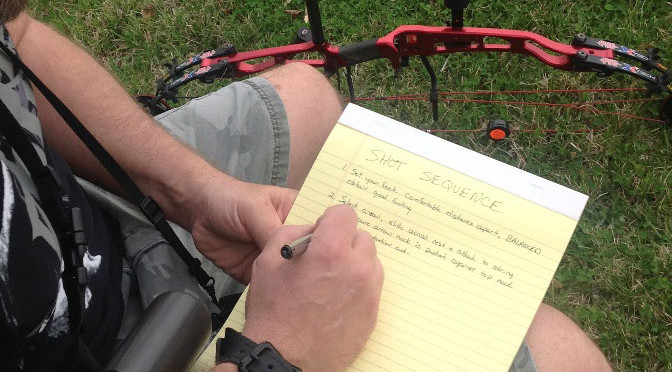

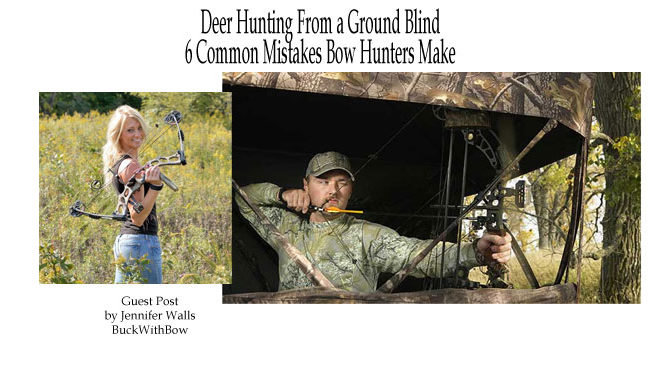
Great article! I have been wondering what the formula is for draw length so that I can figure it out myself. I am so glad that you have provided it! Thanks!